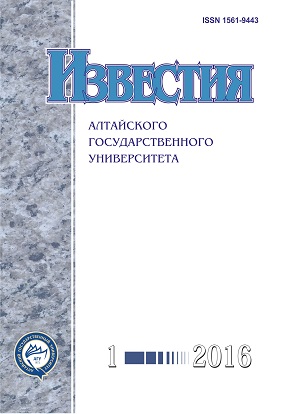Non-Linear Properties of Resistive Polymer Composites with an Agglomerated Filler
Abstract
In this paper, it is shown that application of resistive composite materials depends on its volume electrical resistivity under various conditions. Several conditions require the dependence of volume electrical resistivity on applied voltage to be nonlinear and increasing in strong electric fields. Elastomers with black carbon agglomerated filler are investigated. The value of volume electrical resistivity is controlled by the amount of conductive filler concentration, binder material, type of carbon, and carbon surface processing method. Behavior of voltage- current characteristics in electric fields of various intensity is estimated with a nonlinearity ratio parameter. Several nonlinearity ratio parameters for different composites are obtained, and, in accordance with the results, it is concluded that carbon filled elastomers can be classified as composites with small nonlinearity of voltagecurrent characteristics. It is demonstrated that obtained results can be dependant to specific structure of the agglomerated filler (black carbon). Presented results confirm that small nonlinearity of voltage-current characteristics are caused by the tunnel conductivity of highly-filled elastomers.
DOI 10.14258/izvasu(2016)1-06
Downloads
Metrics
References
Минакова Н.Н., Ушаков В.Я. Физико-технические основы создания высоконаполненных эластомеров и управления их резистивными свойствами. -М., 2003.
Крикоров В.С., Колмакова Л.А. Электропроводящие полимерные материалы. -М., 1984.
Бутенко В.Ф., Важов В.А., Кузнецов Ю.И. и др. Техника высоких напряжений. -Томск, 2008.
Голицын В.П., Артамонова Г.В. Экспериментальное изучение свойств поверхности технического углерода: кислотно-основные свойства фильтратов. Деп. ВНИИТЭ-ХИМ, 08.02.1992. № 162 ХП.
Голицын В.П., Минакова Н.Н. Промышленная технология изготовления электротехнических изделий из вы-соконаполненных эластомеров//Композиты -в народное хозяйство России (Композит-97): сб. тез. докл. Междунар. науч.-техн. конф./Алт. гос. техн. ун-т им. И.И. Ползуно-ва. -Барнаул, 1997.
Фиалков А.С. Углеграфитовые материалы. -М., 1979.
Зуев В.П., Михайлов В.С. Производство сажи. -М., 1970.
Пугачев С.И., Рытов Е.Ю. Ультразвуковое формообразование электрофизической керамики//Вестник ТвГУ. Серия: Физика. -2011. -№ 12.
Батаев A.A. Композиционные материалы: строение, получение, применение. -Новосибирск, 2002.
Гуль В.Е., Шенфиль Л.З. Электропроводящие полимерные композиции. -М., 1984.
Сичкарь В.Р., Брискман Б.А., Буканов И.Г. Электропроводность полимерных композиций на основе полиэтилена и технического углерода//Высокомолекулярные соединения. Сер. А. -1997. -Т. 39, № 6.
Izvestiya of Altai State University is a golden publisher, as we allow self-archiving, but most importantly we are fully transparent about your rights.
Authors may present and discuss their findings ahead of publication: at biological or scientific conferences, on preprint servers, in public databases, and in blogs, wikis, tweets, and other informal communication channels.
Izvestiya of Altai State University allows authors to deposit manuscripts (currently under review or those for intended submission to Izvestiya of Altai State University) in non-commercial, pre-print servers such as ArXiv.
Authors who publish with this journal agree to the following terms:
- Authors retain copyright and grant the journal right of first publication with the work simultaneously licensed under a Creative Commons Attribution License (CC BY 4.0) that allows others to share the work with an acknowledgement of the work's authorship and initial publication in this journal.
- Authors are able to enter into separate, additional contractual arrangements for the non-exclusive distribution of the journal's published version of the work (e.g., post it to an institutional repository or publish it in a book), with an acknowledgement of its initial publication in this journal.
- Authors are permitted and encouraged to post their work online (e.g., in institutional repositories or on their website) prior to and during the submission process, as it can lead to productive exchanges, as well as earlier and greater citation of published work (See The Effect of Open Access).








